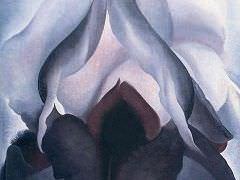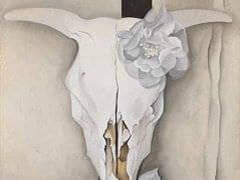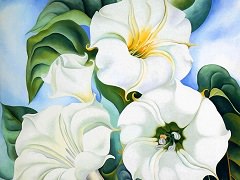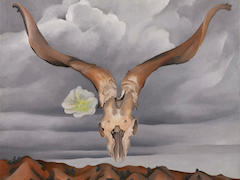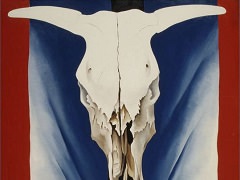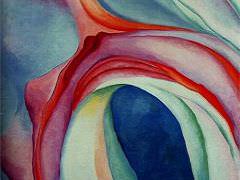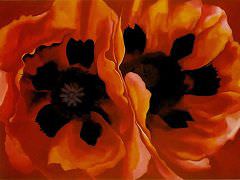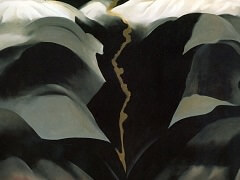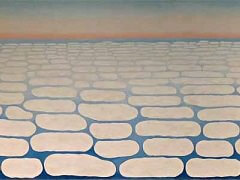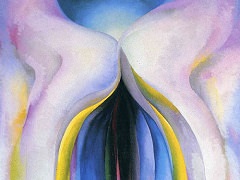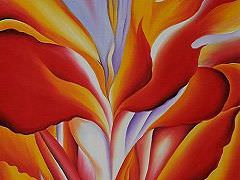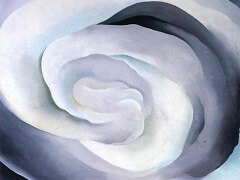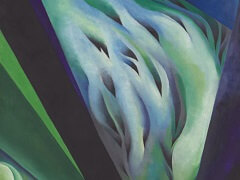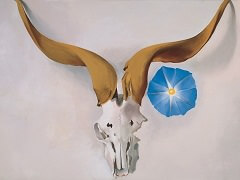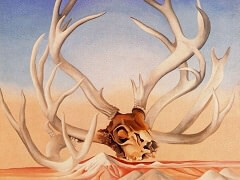Drawing XIII, 1915 by Georgia O'Keeffe
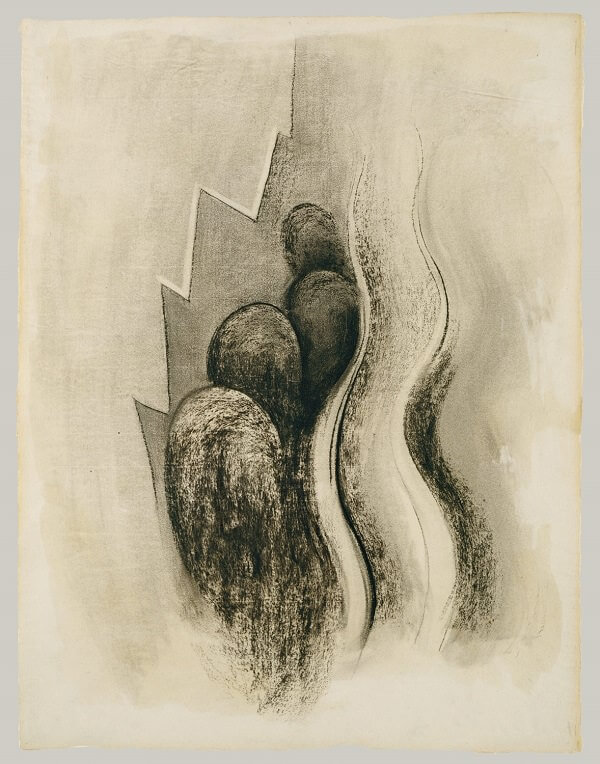
Drawing XIII, 1915, is similar to other drawings of this period by American modernists in its evocation of nature through purely abstract forms and its subjective interpretation of personal experiences. Although O'Keeffe has said that these images were derived solely from her imagination, they reproduce basic forms found in nature that were familiar to the artist from her keen observations of the landscape. What is so unexpected in this drawing of such early date is the strength of its compositional structure and its assured draftsmanship.
The image consists of three distinctly different parallel sections, united in their thrust upward. Each evokes a different aspect of nature. On the right, meandering lines suggest the flow of a river or the rise of a flame. In the center, four elliptical bulbs suggest a rolling hillside or densely foliated trees. To the left, a severely jagged black line, accentuated by erasure, alludes to a rocky mountain range or a bolt of lightning. The contour of the total shape as formed by these three elements is very close to that of the tree in painting Cypresses by Vincent van Gogh. This connection is not as improbable as it might seem: as an avid reader of Stieglitz's periodical Camera Work, O'Keeffe most likely saw this painting reproduced there in black and white, in the June 1913 issue. Both works convey a sense of movement and growth, but while van Gogh's image is agitated and chaotic, O'Keeffe's is ordered and controlled. The comparison illustrates O'Keeffe's ability to absorb the examples of other artists and transform them into original expressions

